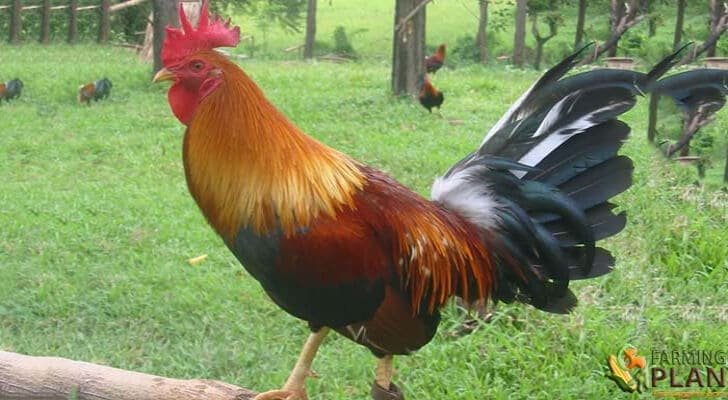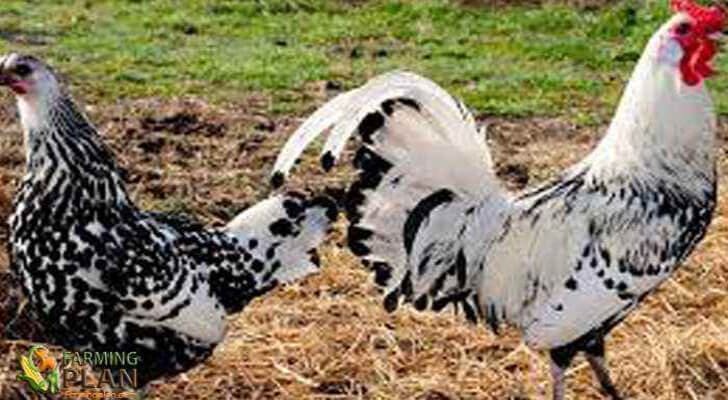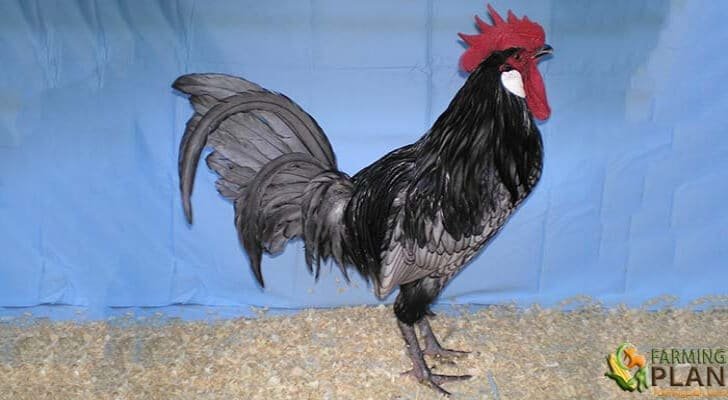Asil Chicken comes from India, where it represented the sporting bird of the Indian magnates, perhaps the oldest known fighting race. Asil is the true Indian denomination of all races of fighters of origin. The Aisles raised in Europe are the descendants of the old Indian race Rajah. Its name derives from the Arabic word Asil, which means pure, noble, purebred. It has been breeding in Europe since 1860.
It is a bird of angular contours, of medium size, with strong bones, very broad and muscular. Porte erect, quite low above the legs. An aggressive character in both the cock and the chicken. Race only bred and perfected for its combat sports qualities. Commonly, hens do not lay more eggs than they can incubate, but they are excellent incubators and mothers.

Characteristics of Asil Chicken
Asil Chicken has strong plumage with little down, underdeveloped and waterproof. The eggs weigh at least 40 grams, with cream to light brown color. The weight of the rooster is between 2 to 2.5 kg., While the chicken weighs between 1.5 to 2 kg. This species has a short head, a small, wide skull, and quiet piano.
The face is a fine texture, has thick cheeks and usually is dark reddish in color. The pea-shaped crest is short, hard and underdeveloped. In addition, it does not have barbels in its place it appears a species of dark red dewlap covered with edge very hard feathers. The Oreilles is little apparent and of dark red color. They also have a very short, strong beak, like raptor and yellow. They have large eyes, sunken and preferably pearl colored.
The neck is rather medium, hard and muscular; right, but something curved towards the nape; The throat is red and has hard bristles. The bondage is quite short feathers, narrow and hard. It has a very short and wide trunk; of extraordinarily firm flesh; Egg-shaped, but crushed. The same one is very inclined towards backward, of plumage strong, scarce and tight, on the other hand, the neck is clearly disengaged.
The back is carried high, wide and flat, very inclined backward, the shoulders are very wide and prominent, but it is narrowed towards the tail, whose start is firm. It has circles that are quite short feathers, narrow and hard. The chest is wide but quite flat. While the abdomen is little developed. The tail is short, closed, inclined and the feathers hard; the sickles, short, narrow and slightly curved; the coverts feathers, little abundant.
It has short wings, rounded, high, stuck to the trunk and the knob of the wing very loose. The thighs are very separate, short, very muscular and poorly feathered. It has short, strong tars, bare, smooth scales, yellow and very sharp spurs. With four vigorous fingers, very wide and well flat on the ground. For all varieties, plumage color is not taken into consideration in the prosecution. You may also like to read Serama chicken.
Although the most known colors of this species are brown, brown pheasant. And the mottled, White, blue with the silver collar. You may also like to read Phoenix Chicken.
Food
Chickens eat 2.9oz (80g) to 4.2 oz (120g) per day, and they like ¼lb of food at a time too! To feed your chickens the right proportion of their daily diet is really easy: just measure out 113 grams in two bowls one for morning feeding and another for evening-time eating or leave some chicken feed near them so that they can nibble on it all day long if you prefer not to do multiple rounds with your hens each day.
Usage
Asil Chicken is a breed that is raised with the intention of using it as a fighting animal. This is due to its physical characteristics, its bones are thick enough which gives it enough resistance in the fights. It is a very combative and strong race difficult to master in the fight for its constant down. In addition, it is a quite aggressive race, a reason why it adapts perfectly to combat. As long as they are properly trained they will show the best fights, but they will only be aggressive with the rest of the birds that surround them.
Special Feature
There are some deficiencies of the race basil chicken are the soft musculature, that the angle of inclination is very horizontal. In addition to having a narrow trunk, narrow shoulders, that the position is higher. That it has the raised tail, the narrow and elongated head, the very long break, the soft and abundant plumage, or the simple crest or in warts.
Once a year the Asil chicken species changes its plumage, it is precisely at that moment when the cocks lower the aggressiveness. When they are like this, it is not advisable to put them to fight since they will not have the same fight level they usually have.
It is the males that mostly show pre-dominance of their territory, they usually fight with any other bird that approaches where this race is. Besides, the males are the ones who fight the most, the women do not show as much aggression and as much defense of their territory as the males would.
FAQ
What are the characteristics of Asil chicken breed?
Asil chicken breed is one of the oldest and most sought-after breeds of chickens in the world with a rich history. Here are some of their distinctive characteristics:
Appearance – Asil chicken have an upright, elegant posture that gives them a regal appearance. They often have long sweeping tails, long legs, thick wings, and full necks that create a proud look. They come in multiple colors such as black or red with yellowish or reddish-brown barring on their feathers which adds to their beauty.
Are Asil chickens friendly?
Asil chickens (also known as Aseel or Asli) are native to the Indian subcontinent and have been kept for centuries in many parts of the world, including India, Pakistan, Malaysia, and beyond. While their personalities tend to vary from bird to bird depending on individual traits, they are generally considered an active and friendly breed.
How many eggs do Asil chickens lay?
The Asil chicken, also known as the Aseel or Asli is a breed of chicken originating from India and Pakistan. They are considered one of the oldest breeds in existence and have been around for thousands of years.
Conclusion
If you’ve read this far, we hope that our guide has been helpful in introducing the Asil or Aseel to you. We encourage all of our readers to explore their own breeds and traditions so they can appreciate how diverse chicken culture is across India. For those who are interested in keeping chickens as pets but don’t know where to start, please feel free to reach out for help! Our team would be happy to provide guidance on what kind of breed may suit your needs best – and even give pointers about how best to care for them day-to-day. Let us know if there’s anything else we can do!
As a reference: Wikipedia


